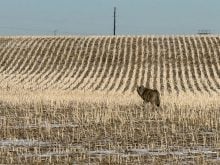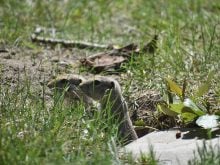Manitoba’s chief veterinary officer Wayne Lees is encouraging livestock owners to vaccinate their animals to prevent anthrax before turning them out onto pasture.
Producers who graze their livestock in areas of the province that have had previous anthrax cases, or in areas with alkaline-to-neutral soils that were flooded this year, are encouraged to vaccinate their livestock, said Lees.
In 2006, Manitoba and Saskatchewan experienced an unusually high number of anthrax cases with Manitoba reporting 148 dead animals from 22 locations and Saskatchewan reporting 806 dead animals from 153 locations.
Cattle and bison accounted for most of the deaths. Losses were also reported in horses, pigs, sheep, goats and white-tailed deer. Some outbreaks occurred in areas of the provinces that had no history of anthrax.
Read Also

Agritechnica Day 2: The future of tractor power, building quicker crop apps and large farms and tech
Agritechnica Day 2: The future of tractor power, building quicker crop apps with Syngenta and large farms and tech
It is important that any sudden deaths in susceptible livestock or wildlife be checked by a veterinarian. If possible, the carcass should not be moved and should be protected from scavengers.
If anthrax is suspected, a blood sample will be taken by the vet and sent into the provincial lab in Winnipeg. Results are often available within 24 hours.
When anthrax is suspected, it must be reported to a local veterinarian or the Canadian Food Inspection Agency. CFIA district offices are listed in the government blue pages of the telephone directory.
To promote reporting and help cover the costs of proper disposal, CFIA will pay up to $500 per head for cattle confirmed dead from anthrax. A payment is also available for horses, bison, sheep, swine, goats and farmed elk and deer.
For more information about anthrax, call 800-442-2342 or visit the CFIA website at www.inspection.gc.ca.














